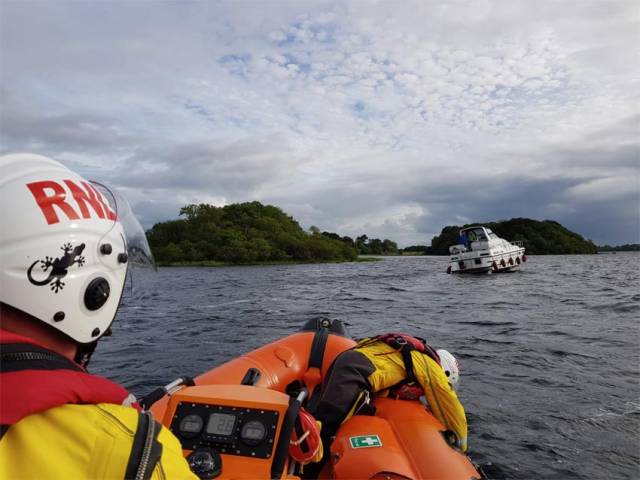Lough Ree RNLI volunteers diverted from a training exercise yesterday evening (Thursday 20 June) on two separate callouts.
While carrying out their regular monthly training on board the inshore lifeboat The Eric Rowse, the RNLI crew were requested by the Irish Coast Guard to assist a person on board a 32ft motor cruiser who had reported having a fire on board.
The casualty had made his own way to Lough Ree Yacht Club, and when the lifeboat arrived on scene the crew spotted smoke coming from the engine bay.
The boat was evacuated and a tow line prepared to move the casualty vessel clear of the marina in case the fire got worse.
Athlone Fire Service were soon on scene and the two crews worked together to assess the situation, identifying an issue with the port-side engine.
When satisfied there was no further risk of fire, the fire service departed and the casualty vessel returned to its home marina using its starboard engine.
While escorting the casualty home, reports came in to the RNLI crew of two people in difficulty on board an inflatable dinghy near Yellow Island, just north of Lough Ree Yacht Club.
The two people were unharmed, but weren’t going to be able to make it ashore themselves. The lifeboat crew brought them safely ashore to Barrymore and gave them safety advice.
Conditions for the evening were dry with good visibility and a variable westerly breeze.
Earlier this week, Lough Ree’s volunteer crew went to the assistance of four people whose boat had gone aground between Carberry and Kid Island to the south of Lough Ree. The four people were uninjured and were brought to Coosan Point.
Speaking yesterday evening, Lough Ree RNLI volunteer helm Tom Bradbury said: “We would like to commend the gentleman whose engine started to smoke on his quick actions in requesting assistance.
“We would like to remind people that it is important to always wear your lifejacket when using the lake and to let someone know where you’re going and when you expect to reach your destination.”































































